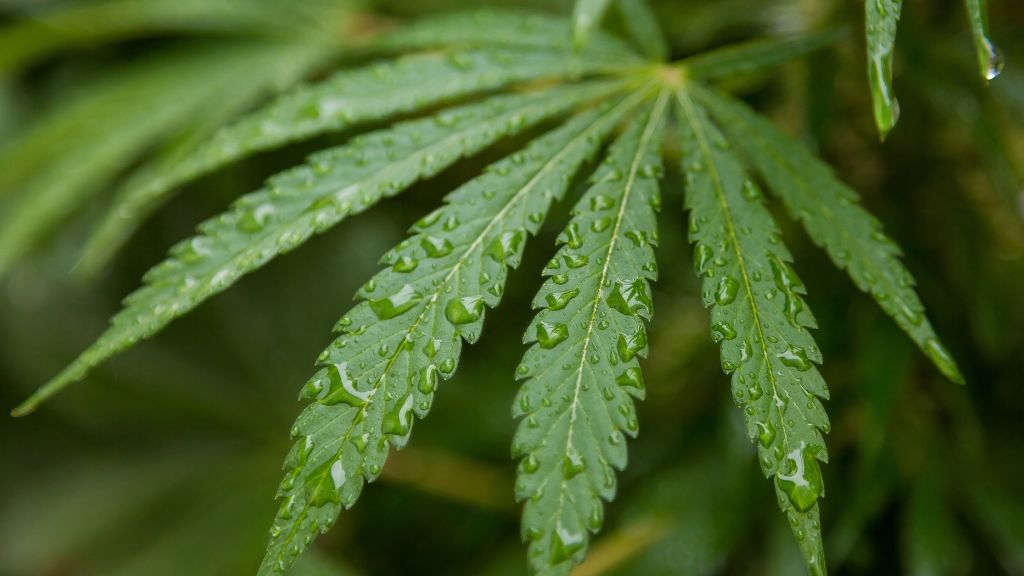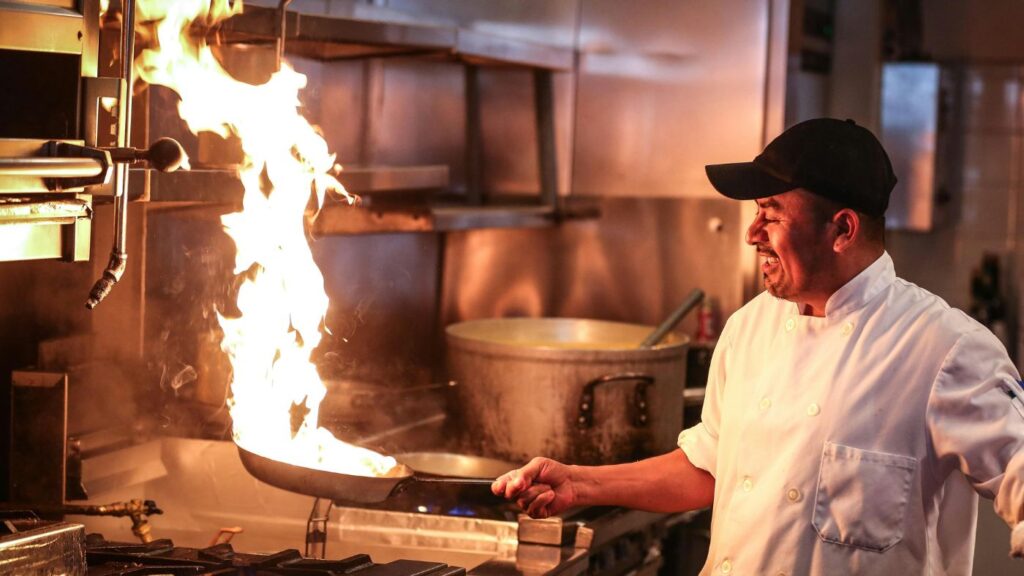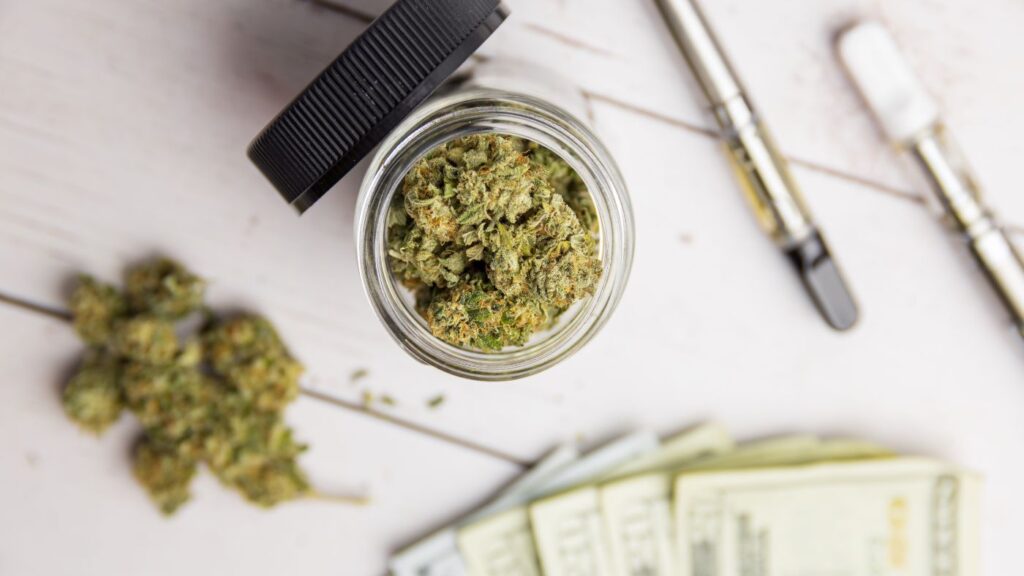Estimated reading time: 17 minutes
Table of contents
- The Essential Ingredients
- Regulatory Compliance Is The Foundation of Success
- Curating a Dynamic Yet Manageable Menu
- Staff Training and Concierge-Level Service
- Cannabis Marketing, Online Presence, and Loyalty
- Quality Products and Accessories
- Conclusion
- Top-Tier Cannabis Dispensary Operations FAQs
- Additional Resources
- Free eBooks For Cannabis Business Success
- Latest Articles
Cliff Notes: Refining your dispensary operations to exceed in the industry
Objective: Run a high-performing cannabis dispensary—from regulatory compliance to curated menus, staff training, and community engagement. By refining your dispensary operations, you will increase customer loyalty, and maintain legal integrity.
Key Components:
- Cannabis Compliance is non-negotiable; top dispensaries embed regulations into daily operations, SOPs, and staff training.
- Mastering ID verification, recordkeeping, surveillance, and more protects your license and builds consumer trust.
- Menus should balance variety and simplicity, spotlighting staff picks and limiting overstock to avoid choice fatigue.
- A well-trained team of budtenders delivers concierge-level service by tailoring recommendations to each customer’s needs.
- Digital tools, like real-time menus and seamless POS integration, enhance customer confidence and upsell opportunities.
- Loyalty programs, email marketing, and thoughtful online content keep customers engaged and returning.
- Stocking high-quality accessories and maintaining a clean, welcoming space boosts average order value and satisfaction.
- Community events, vendor demos, and customer appreciation days reinforce local ties and deepen brand loyalty.
Catalyst BC offers expert consulting to dispensary operators who want to elevate every aspect of their business—from licensing and cannabis compliance to cannabis marketing and menu curation. Book your complimentary consultation today.

The Essential Ingredients
Operating a highly reviewed, top-performing cannabis dispensary takes more than simply stocking product and unlocking the doors. It requires operational discipline, regulatory expertise, top-tier customer service, dynamic merchandising, and a culture of accountability and community. With the cannabis industry continuing to expand—and regulations constantly evolving—success is defined by how seamlessly a dispensary integrates compliance, product curation, staff training, and marketing into day-to-day operations. In this blog, we’ll explore key strategies that define the most successful dispensaries: from compliance mastery and thoughtful menu design, to customer loyalty, community events, and more.
Regulatory Compliance Is The Foundation of Success
Compliance is the foundation of every dispensary’s operations. A cannabis retailer can have the best products and branding, but without a deep understanding of local and state regulations, they risk license suspension, costly fines, or even shutdown. Operators must understand regulations governing ID verification, surveillance, recordkeeping, packaging, marketing, storage, and more.
Best-in-class dispensaries don’t treat compliance as a box to check—they embed it into daily routines and operational culture. Every employee should understand not just what the regulations are, but why they exist. This clarity empowers teams to act responsibly and confidently.
For example, during a licensing inspection in Illinois, an auditor challenged the use of 14″ POS monitors, citing a rule that screens must be at least 19″. However, the rule applied to security monitors—not sales terminals. By carefully citing the regulation, the owner pointed out that the 19-inch rule applied to security monitors, not sales terminals. Because the operator understood the regulation’s intent and wording, they successfully challenged the claim and passed inspection with a perfect score.
This level of detail – knowing each regulation’s context – was critical: it won the store a same-day license and a “perfect score” on inspection. Such examples highlight why every procedure in a dispensary should be documented in SOPs and reviewed during staff training. Employees should understand why rules exist (e.g. security, public safety, avoiding diversion) so they follow them earnestly.
Key compliance practices include:
Regular staff training on regulations
Budtenders and managers must do more than memorize product facts; they need to interpret regulations and apply them in real time. Advanced compliance training uses role-play and inspections drills so staff can confidently handle audits or emergencies
Clear SOPs and accountability
Develop comprehensive SOPs for every key task—from product intake and vault access to waste disposal. Every action – from receiving deliveries to disposing of unsold cannabis – should have a written procedure. Include compliance requirements in onboarding and regular training. Use mock audits to reinforce best practices.
Continuous monitoring and documentation
Keep logs, video records, and incident reports up to date. Regulators often look at records to verify good-faith compliance, so store them methodically. Knowing specifics (like camera angle requirements or retention periods) ensures inspectors see a store that’s thoughtful and thorough. Designate team members to perform weekly or monthly compliance reviews. Maintain checklists, access logs, and surveillance reports. Assign clear ownership of key compliance tasks.
By investing in a culture of compliance, a dispensary not only avoids costly violations – in cannabis retail, penalties can include license suspension or even federal prosecution– but also builds consumer trust. Customers feel more secure in a store that obviously prioritizes safety and legality. In practice, this means compliance checks become second nature: staff greet every adult, verify IDs consistently, handle cash transparently, and keep security equipment in top shape. Compliance enhances productivity when done right; it reduces wasted time fixing mistakes and reinforces a reputation as a reliable retailer.
Curating a Dynamic Yet Manageable Menu
A cornerstone of a successful dispensary is a well-curated product menu. Today’s cannabis customers love variety, but overwhelming them with hundreds of choices can backfire. Providing excessive options often lead to “analysis paralysis,” where customers freeze and buy less. Effective shops strike a balance: they stock a breadth of categories (flower, edibles, concentrates, topicals, etc.) but highlight a reasonable number of top sellers and new arrivals.
Product Variety and Fresh Choices
Offer a rotating variety. Cannabis is a fast-evolving market with new strains and products frequently launching. A top dispensary keeps the menu fresh by rotating in novel or limited-edition items alongside the classics. Loyal customers appreciate seeing their go-to brands available, while novelty-seekers return for special drops. This is analogous to a popular band’s concert setlist: a mix of fan favorites and surprising covers or new songs keeps everyone happy.
Spotlight Popular Products And Recommendations
Highlight best-sellers and staff picks. Dedicate space on your menu or in-store displays to showcase top-performing products and staff recommendations. Customers often look to budtenders for guidance, especially when faced with multiple options. Featuring a “staff picks” wall or tagging popular items on your digital menu can help shoppers make quicker, more confident decisions. These highlights not only drive sales but also reinforce trust in your team’s product knowledge.
Limit Overstock
Avoid carrying every single product under the sun. A focused, curated selection keeps the store organized and inventory turn-around healthy. Too many similar items (e.g. a dozen different pre-roll variations) can confuse customers. Instead, rotate in limited runs: for instance, have a few rotating slot machines of special strains or extracts monthly, ensuring there’s always “something new” without cluttering the shelves. Too many on-display options can be counterproductive. By curating the right balance of products, a dispensary helps customers make decisions and increases sales.
Since cannabis consumers vary widely in experience level, medical needs, and personal preferences, it’s critical for dispensary staff to adapt their communication accordingly. A first-time medical patient seeking relief from chronic pain may require a slower, more educational approach than a recreational customer looking for a high-potency concentrate. Effective staff are trained to ask thoughtful questions, listen actively, and tailor their recommendations based on each customer’s goals, tolerance, and desired experience. This level of attentiveness not only improves customer satisfaction but also builds long-term trust and loyalty. By reading each situation and responding with clarity and empathy, staff can guide customers toward the right products with confidence and professionalism.
To keep the menu dynamic and visible, many dispensaries use digital menu boards or apps that update in real-time. Online and in-store menus should match so customers aren’t disappointed. A dynamic menu (with stock and pricing updated on the fly) not only improves customer satisfaction but also helps staff upsell or suggest deals easily. (For instance, if a flower strain is nearly out of stock, the POS system can flag an upsell deal on an alternative before rings are final.)
Staff Training and Concierge-Level Service
Knowledgeable, friendly staff are the cornerstone of a successful dispensary. Training should go beyond basic product information to include cannabis fundamentals such as cannabinoid profiles, terpene characteristics, and various methods of consumption. Equally important are soft skills—budtenders must be able to communicate clearly, adapt to diverse customer needs, and provide thoughtful, personalized recommendations. Regular training sessions, role-playing exercises, and internal product demos help staff stay sharp and confident, ensuring they can guide customers effectively and enhance the overall experience.
Good customer interactions should feel personal. A concierge-level approach means greeting every customer warmly, addressing them by name when possible, and making them feel genuinely valued. Dispensaries can enhance this experience by recording customer preferences, birthdays, or past purchases in their point-of-sale system. Training staff to use these details—whether through a friendly “welcome back” or a thoughtful product recommendation—fosters a sense of familiarity and trust. Even without a formal VIP program, treating returning customers with extra attention helps strengthen loyalty and builds lasting relationships.
Other aspects of concierge service include:
Guided Tours and Demos
Just as a fine restaurant might introduce you to the chef, some dispensaries host weekly “meet the grower” or “cannabis 101” sessions. Inviting a cultivator or manufacturer to talk with customers about how flower is grown or concentrates are made can deepen engagement. These events educate consumers and make them feel part of the cannabis community.
Educational materials
Provide brochures, charts of strain effects, or digital tablets that let customers browse product info. A dispensary kiosk or tablet (as a POS demo) can be a friendly learning tool: one blog notes how tablets can help display product info as budtenders explain options.
Smooth transactions
Minimize wait times with multiple checkouts or mobile check-in apps. Discreetly manage lines (e.g. a queue system with pagers) so customers don’t feel idle. Ensure payment systems (cannabis-friendly credit/debit) are reliable to avoid delays.
Clean, inviting environment
Regularly tidy the store, update décor to match your brand, and display products neatly. A welcoming seating area or counter for questions makes the experience more personalized.
By combining expert product guidance with genuine hospitality, customers leave feeling satisfied and heard. This leads to positive online reviews – critical in cannabis retail – and word-of-mouth referrals. In fact, customers who have a memorable service experience often become the biggest advocates for a store.
Cannabis Marketing, Online Presence, and Loyalty
Even the best dispensary can’t grow if no one knows it exists. A strong online presence raises visibility and drives traffic. This includes:
Local SEO
Ensure the dispensary’s name, address, and phone are consistent across Google, Weedmaps, Leafly, and your website. Optimize your site with relevant keywords (like “cannabis dispensary [city]”) and publish regular blog posts or news to improve search rankings.
Social media and content
Use cannabis-friendly platforms (e.g. Twitter/X, Instagram with care, TikTok where allowed) to showcase new products, behind-the-scenes clips, or staff picks. Share educational posts (e.g. “terpene of the week”) to engage your audience. Remember compliance restrictions: don’t explicitly advertise cannabis sales to minors or make medical claims. Instead, focus on community-building content.
Email marketing
Collect customer emails at signup and send weekly newsletters with new products, store news, or educational articles. Segment emails by interest (e.g. “edibles lovers” vs. “vape collectors”) to make them more relevant.
In-store exclusives
While being visible online is important, it’s wise to keep some deals only for walk-in shoppers. Announce broadly that surprises await in-store – maybe a “mystery discount” or flash sale known only to customers on the floor. This encourages foot traffic and loyalty.
Online strategies should enhance, not replace, the in-store experience. A well-maintained website or digital menu allows customers to browse real-time inventory, explore product details, and plan their visit with confidence. Keeping online menus accurate and up-to-date helps build credibility and prevents customer frustration. When digital tools are aligned with in-store offerings, they serve as a valuable extension of your retail environment—reinforcing convenience, transparency, and trust.
Loyalty rewards are a proven way to keep customers returning. Cannabis loyalty programs (points, tiers, VIP clubs) are “recognized as a leading dispensary marketing method”. Points-for-purchases (e.g. 1 point per $1 spent) redeemable for discounts, free products, or merch give customers a reason to choose your store over others. Tiered systems (Silver/Gold/Platinum levels) make high-spenders feel special, while simple birthday or referral bonuses reward all shoppers. Make sure your POS system integrates a loyalty feature: the smoother and more visible the rewards (for instance, printing point balances on each receipt), the more engaged customers will be. Even a small perk – a $5 birthday gift or free accessory after ten visits – can create goodwill.
Customer retention plays a vital role in long-term dispensary success. A significant portion of revenue typically comes from loyal repeat shoppers, making it essential to invest in strategies that reward and recognize their continued support. Treating returning customers as VIPs—offering early access to new products, exclusive event invitations, or personalized service—can go a long way in fostering loyalty. Simple gestures like greeting frequent customers by name, remembering their preferences, or providing occasional perks help create a welcoming and memorable experience that keeps them coming back.
Quality Products and Accessories
A profitable dispensary thinks beyond flower and edibles – accessories and merch matter too. Lighters, grinders, glass pipes, vaporizers, rolling papers and branded swag can boost sales and enhance the customer experience. Stock a range of accessories at various price points: from budget-friendly essentials (rolling papers, silicone storage) to premium items (artisanal glassware, high-tech vaporizers). Not only does this meet different budgets, but it also educates new customers about the options. For instance, someone buying joints might notice a beautiful glass bong or an electric dab pen and purchase an accessory on impulse.
However, quality is paramount. Customers who buy cheap, easily-broken glass might lose trust in the store. One operations consultant advises being selective with vendors because “high-quality products have fewer returns”. In practice, this means testing accessories yourself or choosing reputable brands. A break-resistant grinder or a well-made vaporizer results in happy customers and fewer complaints. If your state allows returns on accessories, a generous but sensible return policy can also build loyalty (for example, store credit on broken accessories, but limit returns on consumables).
Furthermore, keep stock levels smart. Accessories should be well-merchandised: a clean glass display case for bongs and pipes, peg hooks for lighters and papers, organized shelves for cartridges. Rotate new gadget arrivals so regulars see something fresh. And always ensure hygiene: sanitize demo products (mouthpieces, dab tools) between uses, and train staff to explain how to clean and care for these items.
Community Events and Appreciation Days
The most memorable dispensaries often go beyond retail and become community hubs. Hosting in-store events can draw crowds and solidify customer loyalty. Consider occasional “Customer Appreciation Days” with special discounts, giveaways, or games. For example, offer a bundle deal or raffle prize (like a high-end vaporizer) that rewards attendance. Sound contraindicated? It’s similar to a supermarket’s loyalty sale or a café’s loyalty latte: small discounts or extras on certain days make customers feel valued.
Bring in guest speakers to pique interest. A popular event is “Meet the Grower” or “Meet the Maker,” where a cultivator or producer comes to the shop to chat. It’s like when diners meet a restaurant’s chef: customers can ask about plant genetics, cultivation methods, or product philosophy. This personal touch differentiates a store. Even outside 4/20 holiday specials, live music or local art showcases can make a dispensary an inviting place\ While such events take planning and sometimes permits, even simple weekend hangouts (acoustic music, vendor demos) can create buzz.
Always ensure any promotion complies with local laws (no free cannabis giveaways where illegal, no advertising to minors, etc.). But within those boundaries, creative events enrich the customer experience. A few tactics:
Holiday or theme promotions
Tie deals to holidays or themes (e.g. “Flower Friday” sales, Halloween pumpkin carving contests, winter “green” deals, etc.). Even if cannabis-specific holidays (4/20, 7/10) come with self-promotion caveats, creative marketing (swag giveaways, collaborations with local brands) can still drive traffic.
Product launches and demos
When a new product batch arrives, celebrate it. Offer samples (e.g. branded lollipop hits, herbal teas) or demo items under supervision. Place staff-recommended items on a “new” shelf.
Collaborations with other businesses
Sponsor a local art show, set up a booth at community fairs (where permitted), or partner with a cafe for a “coffee and cannabis pairing” event (within legal limits). Community involvement builds goodwill and often offers cross-promotion.
Regardless of the event, capture customer information (emails, feedback) during the event so that you can market to them later. And always follow up on social media – post photos of happy customers (with consent) or thank-you notes after an event. Over time, these community-building efforts translate into a loyal customer base and brand advocates.
Conclusion
Running a highly reviewed, successful cannabis dispensary is a blend of strict compliance, smart merchandising, excellent service, and engaging marketing. At every step, keep in mind why each rule or practice exists: safety for the customer, trust for the community, or satisfaction for the patient. By embedding regulations into SOPs, curating a thoughtful product selection, empowering staff with knowledge, and treating customers like VIPs, a dispensary can flourish.
Invest in a dynamic menu that balances variety and familiarity, and train your team to guide customers through it. Reward loyal customers with points and surprise perks, and keep them coming back with convenience and personal attention. Stand out online with clear information and exclusive promotions, but also reward the on-site experience. Stock top-notch accessories and educate your community through events – after all, a dispensary is more than a store, it’s part of a growing culture.
With rigorous attention to compliance (which protects your license) and genuine service, your dispensary won’t just comply – it will prosper. These combined best practices will not only help ensure perfect inspections but will also build a strong reputation, turning first-time visitors into lifelong patrons.
Top-Tier Cannabis Dispensary Operations FAQs
Top-performing cannabis dispensary operations require more than great products—they rely on strong compliance practices, staff training, curated product menus, and a customer-first approach. Operators must blend regulatory knowledge, merchandising strategy, and marketing execution to stay competitive.
Cannabis compliance is essential for protecting your dispensary license and avoiding costly violations. From ID checks to packaging and security, dispensary legal requirements should be built into standard operating procedures and reinforced through regular training.
Budtenders should be trained in both cannabis product knowledge and soft skills like listening, empathy, and personalized service. Dispensary hospitality and customer-focused service help improve loyalty, reviews, and overall cannabis retail experience.
A well-curated cannabis product menu helps customers make confident decisions and increases sales. Dispensary best practices recommend balancing variety with simplicity—highlighting top-sellers, staff picks, and rotating items to keep the experience fresh.
Effective cannabis dispensary marketing includes local SEO, educational social content, and segmented email campaigns. Dispensary outreach efforts should align with compliance rules while promoting brand trust and driving foot traffic.
Points-based loyalty programs, birthday perks, and VIP tiers are proven dispensary marketing methods. Cannabis retail management systems should integrate loyalty features to encourage return visits and increase average customer spend.
Smart cannabis dispensary operations include stocking quality accessories like grinders, pipes, and vaporizers that appeal to all budgets. Merchandising strategies should rotate inventory, highlight premium brands, and train staff to explain product care.
Hosting in-store events, educational sessions, and vendor demos enhances your dispensary’s reputation and deepens customer relationships. These cannabis retail strategies build community goodwill, boost traffic, and reinforce a customer-first experience.
Additional Resources
Free eBooks For Cannabis Business Success
Latest Articles
- Utah Medical Cannabis Pharmacy License Applications Open for 2025: Eligibility, Deadlines, and RequirementsThe Utah Department of Agriculture and Food (UDAF) has officially launched the first application period for two independent medical cannabis pharmacy licenses, running from July 1 through July 31, 2025. Originating from House Bill 54, passed during Utah’s 2025 legislative session, these new pharmacy licenses aim to broaden medical cannabis access in medically underserved areas across the state.
- Cannabis Startup Costs: From Licensing to ProfitabilityStarting a legal cannabis business isn’t just about getting a license—it’s about building a profitable, compliant, and sustainable operation in one of the world’s most capital-intensive and regulated industries. Many entrepreneurs enter this space with many goals, good intentions, and passion, but ultimately fail because they underestimate the cost, complexity, experience, and time required to turn a cannabis license into a thriving business.
- Cannabis License Pitfalls: How to Avoid Common Cannabis Licensing MistakesAs new adult-use programs launch, many entrepreneurs are eager to start growing, processing, or selling cannabis. Excitement runs high, but the industry’s heavy regulations and complex operations can quickly overwhelm even experienced business owners. Common mistakes include underestimating compliance requirements, rushing facility design, skipping proper procedures, and more.
- Maximizing Your Minnesota Cannabis Microbusiness or Mezzobusiness LicenseMinnesota’s new adult-use cannabis law allows microbusinesses (one store, up to 5,000 sq ft indoor, ½ acre outdoor) and mezzobusinesses (up to 3 stores, 15,000 sq ft indoor, 1 acre outdoor) to cultivate, manufacture, sell, and transport cannabis under one license. These vertically integrated licenses offer flexibility, but also come with complex state rules.
- The Recipe for a Top-Tier Cannabis DispensaryOperating a highly reviewed, top-performing cannabis dispensary takes more than simply stocking product and unlocking the doors. It requires operational discipline, regulatory expertise, top-tier customer service, dynamic merchandising, and a culture of accountability and community. With the cannabis industry continuing to expand—and regulations constantly evolving—success is defined by how seamlessly a dispensary integrates compliance, product curation, staff training, and marketing into day-to-day operations.
- Minnesota Lottery Results: June 5 Cannabis License Drawings and What’s NextThe Minnesota Lottery for cannabis business licenses reached a pivotal milestone on June 5, as the Office of Cannabis Management (OCM) conducted randomized drawings for select license types. These lotteries were open to both social equity applicants and general applicants vying for limited licenses to operate as cultivators, manufacturers, and mezzobusinesses. Additionally, a separate lottery was held exclusively for social equity applicants seeking a retail cannabis license.










